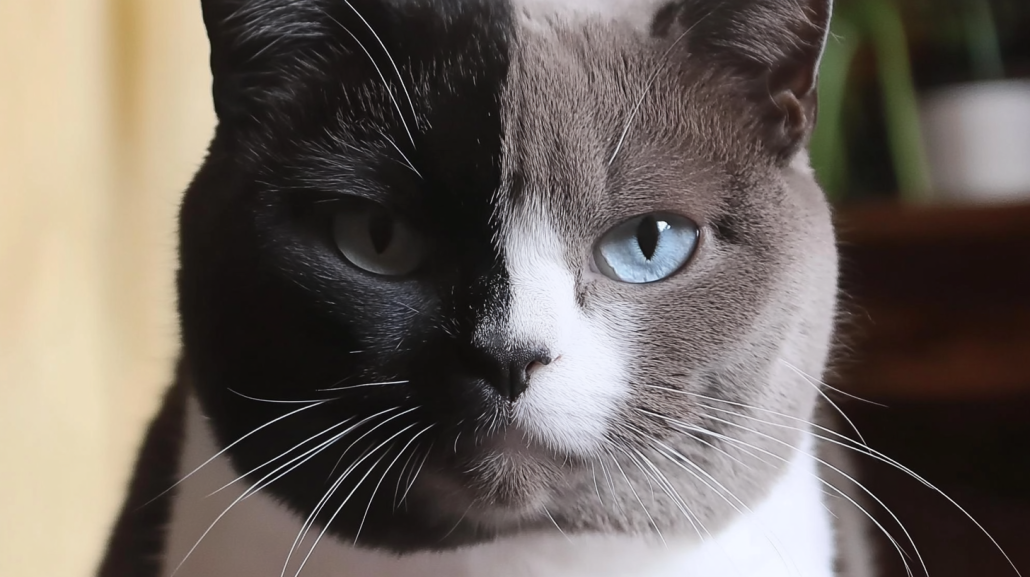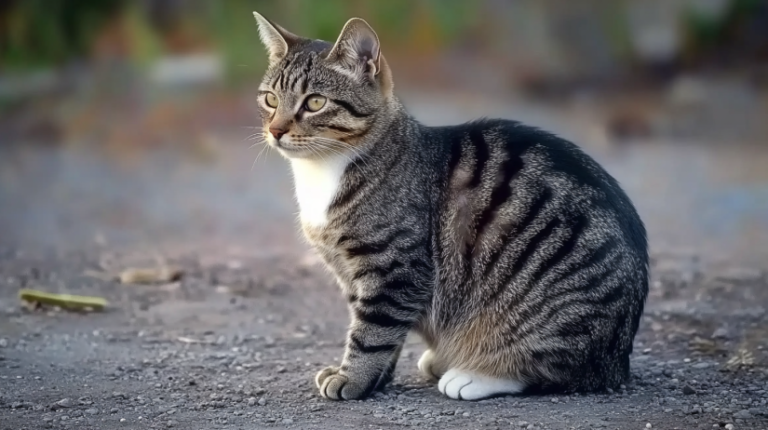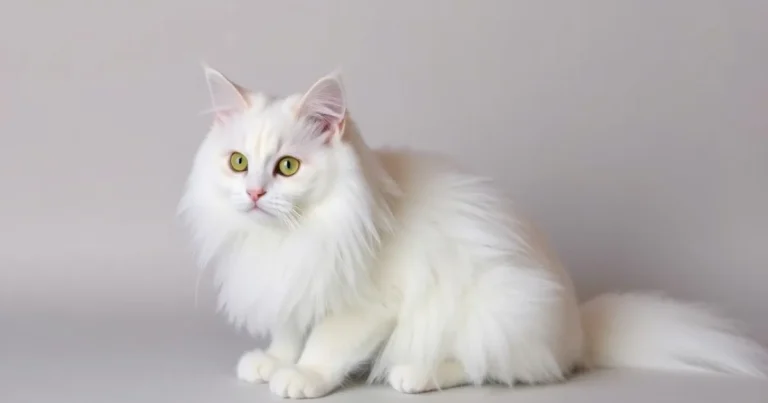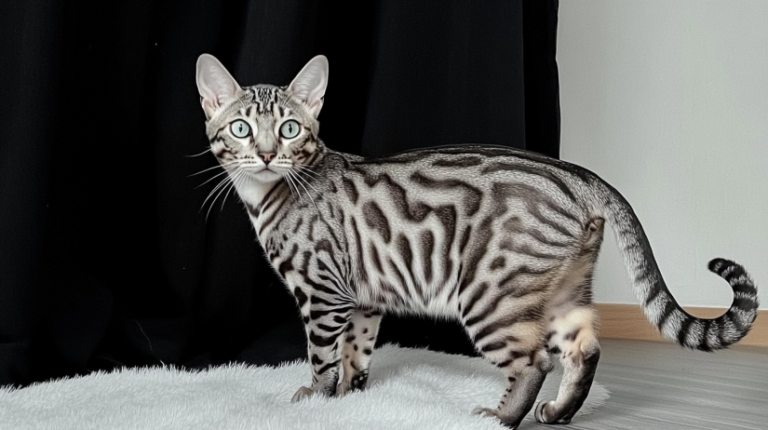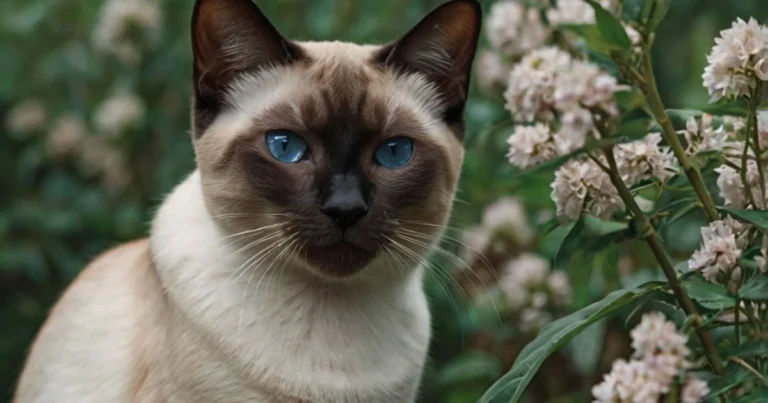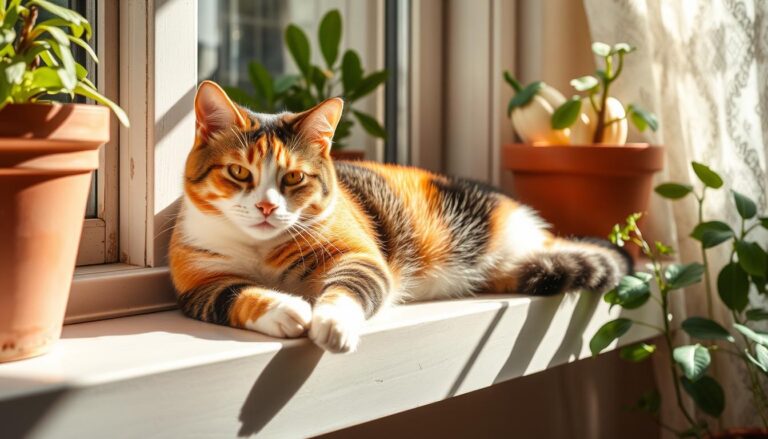Chimera cat breeds: 5 Astonishing Secrets You’ll Adore
Introduction
Have you ever seen an adorable kitty whose face looks almost perfectly split down the middle, each half boasting a completely different color? You might have stumbled upon one of the most intriguing feline wonders: chimera cat breeds. Even if “chimera cat breeds” isn’t an official breed category in itself, the term has caught on among cat lovers everywhere to describe cats that present a dazzling array of mismatched fur tones that seemingly defy logic.
In this comprehensive, playful exploration, you’ll discover what makes chimera cat breeds so special, why they occur, and how to identify them. You’ll also learn about well-known chimera cats who’ve taken social media by storm, the science behind this genetics quirk, and how to care for these extraordinary felines. By the end, you’ll be more than ready to share the story of chimera cat breeds at your next pet-loving gathering—and maybe even adopt one into your own family!
Key Takeaways
- Chimera cat breeds aren’t a formal category but a genetic anomaly that can appear in any breed.
- A visually “split face” is a common marker but not a guaranteed sign of chimerism.
- DNA testing is the only way to confirm chimeric status.
- Caring for chimera cats mirrors standard cat care, tailored to their breed’s specific needs.
- Adopting a chimera cat is often a matter of luck and timing—always verify a cat’s health before bringing it home.
- Chimerism doesn’t dictate personality, so these cats are just as unique as any other feline friend.
What Exactly Are Chimera Cat Breeds?
To understand chimera cat breeds, it helps to know that a “chimera” in biological terms is an organism composed of cells from two or more different zygotes. In simpler language, it means the cat started with two distinct genetic blueprints that merged into one individual. As a result, these felines sometimes exhibit half-and-half coloring on their faces or bodies, though visual manifestations can vary widely.
- Common Misconception: People often think every split-faced cat is a chimera cat. While it may be true in some cases, split faces can also be caused by other genetic factors.
- Genetic Mixing: Chimera cat breeds have two sets of DNA, which could result in unmatched fur patches or even two eye colors if heterochromia is present.
- No Strict Breed Category: Because chimerism is a genetic accident, it doesn’t belong to a specific breed standard. Any cat—be it a Maine Coon, a Domestic Shorthair, or a British Shorthair—can display chimera features if the conditions are right.
Chimera cat breeds are fascinating to observe and study. Although the term “chimera cat breeds” might make it sound like a separate classification, it’s more about an eye-catching genetic quirk that can appear in many different feline lineages.
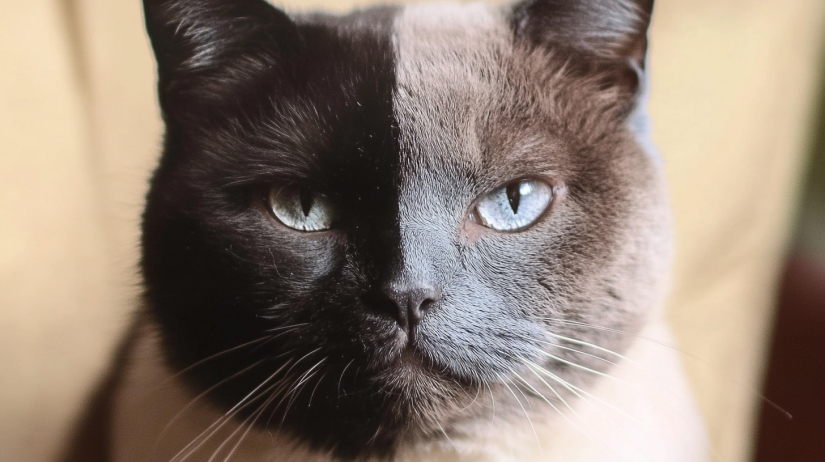
Why Are Chimera Cat Breeds So Popular?
Curiosity is a powerful thing. The internet has an endless fascination with adorable cats, and chimera cat breeds are no exception. Here are some key reasons why they’ve captured hearts all over the world:
- Visually Striking: A cat with a perfectly half-black and half-orange face is bound to turn heads.
- Social Media Stardom: Viral posts about chimera cats, such as the famous Venus “Two-Faced Cat,” have sparked international attention.
- Rarity: Even though chimerism can happen in any breed, the odds of it manifesting in a dramatic split pattern are relatively low, adding to their allure.
According to the Cornell Feline Health Center, unique patterns in cats—even if just coat color—often draw extra attention from potential adopters, which can be a good thing for shelter cats displaying chimera-like traits. This phenomenon can encourage adoptions, which is a win-win for both the cats and their future families.
Famous Chimera Cats You Should Know
Several chimera cat breeds have made headlines or gone viral on social media platforms. If you love flipping through adorable cat pictures, you’ve probably seen at least one of these internet sensations:
- Venus, The Two-Faced Cat: Perhaps the most iconic chimera cat, Venus has a perfectly bisected face—one half is black with a green eye, and the other half is orange tabby with a blue eye.
- Narnia, The Blue-Eyed Wonder: Sporting a split-faced black-and-gray pattern, Narnia has also garnered significant social media popularity.
- Quimera: Another aptly named chimera cat with half tortoiseshell, half black face, Quimera lives in Argentina and dazzles fans worldwide with her mesmerizing gaze.
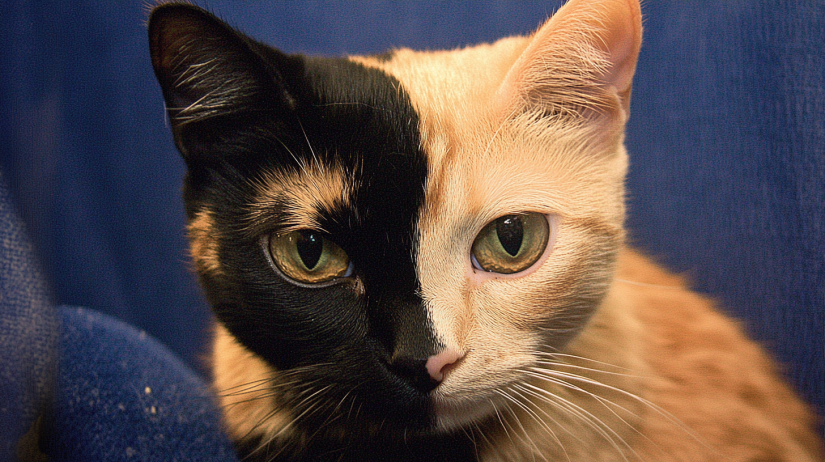
These famous felines not only showcase the distinctive appearance that chimera cat breeds can have, but they also help educate the public about the genetic marvel behind their unique looks.
The Science Behind Chimera Cat Breeds
So, how do chimera cat breeds come about genetically? Essentially, two fertilized eggs (or early-stage embryos) fuse to create a single individual. This results in a patchwork of cells that may originate from different genetic pools.
Potential Causes of Chimerism
- Early Fusion: During the earliest stages of embryonic development, two separate zygotes might merge.
- Tetragametic Chimerism: The term “tetragametic” refers to the presence of four gametes (two sperm and two eggs) that combine.
- Cell Migration: In some cases, certain cells carrying one genotype cluster in specific areas of the cat’s body, resulting in a partially split color pattern.
Since chimera cat breeds don’t adhere to a specific breed standard, veterinarians rely on DNA testing to confirm chimerism. A test might reveal that certain patches of the cat’s skin or fur carry different DNA than others. If this genetic puzzle intrigues you, you’re not alone—researchers continue to explore new insights into how and why chimerism manifests in the feline world.
Common Visual Traits in Chimera Cat Breeds
While no two chimera cat breeds look exactly alike, a few visual markers often appear:
- Split Face: One of the most iconic signs of chimera cat breeds is a near-perfect vertical line dividing two fur colors on the face.
- Contrasting Body Patches: Some chimera cats might have larger patches of differing color across their torso or limbs.
- Mosaic Patterns: In some cases, the fur colors swirl together, creating a mosaic effect rather than a neat split.
- Odd-Eyed Appearance: Because of how genetics distribute melanin, some chimera cats may exhibit heterochromia (each eye a different color).
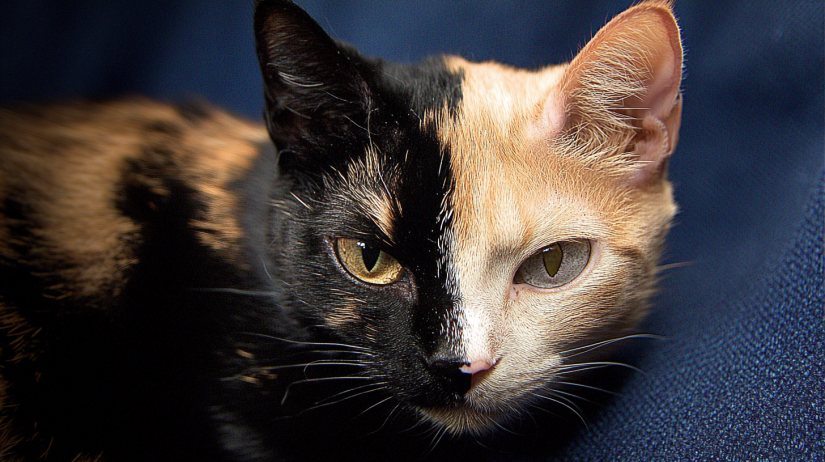
Bear in mind that a split-faced cat isn’t automatically a chimera. Tortie (tortoiseshell) cats, calico cats, and other patterns can sometimes mimic a chimera’s look. Genetic testing is the only surefire way to confirm chimerism. That said, many cat enthusiasts use the term “chimera cat breeds” more loosely to describe any cat with dramatic color division.
Table: Comparing Common Cat Coat Patterns vs. Chimera
Below is a simplified table that contrasts standard coat patterns with the distinctive traits seen in chimera cat breeds:
| Coat Pattern | Key Traits | Occurrence |
|---|---|---|
| Tortoiseshell (Tortie) | Black/orange/brown fur intermingled in patches | Common, typically in female cats |
| Calico | White, black, and orange patches | Fairly common in female cats |
| Tabby | Striped or spotted patterns (classic, mackerel, spotted) | Widespread across many breeds |
| Solid Color | Single color (e.g., black, white, grey) | Very common in multiple cat breeds |
| Chimera | Visibly split face or body parts due to merged genetics | Rare and can occur in any breed or mix |
As you can see, chimera cat breeds represent a genetic anomaly, not just a typical variation in coat pattern.
Are There Specific Chimera Cat Breeds?
One of the most common questions is whether chimera cat breeds belong to a recognized breed group. The short answer is no: chimerism can occur in almost any cat breed. However, some cat enthusiasts describe “chimera cat breeds” to group all chimera cats together—though this remains an informal classification.
Breeds Known to Exhibit Chimerism
- Domestic Shorthair / Domestic Longhair: Mixed-breed cats often show chimeric patterns, likely due to diverse genetic backgrounds.
- Persian: Rarely, you might see a Persian with split-colored facial features.
- Maine Coon: Some Maine Coon cats have also been confirmed chimeras through DNA testing.
- Sphynx: While their hairless state makes it less visually obvious, chimerism can still occur at the skin-pigment level.
Because chimera cat breeds aren’t a formal category, you won’t find them listed in breed registries like The International Cat Association (TICA) or the Cat Fanciers’ Association (CFA). Nevertheless, their rarity and fascinating appearance continue to enthrall cat lovers worldwide.
Adopting a Chimera Cat vs. Buying From a Breeder
If you’re smitten with the idea of chimera cat breeds, you may wonder where to find one. Here are some considerations:
- Adoption: Visit your local shelter or check cat rescue organizations for unique felines. Many mixed-breed cats displaying split coloration are waiting for forever homes.
- Breeders: Because chimerism is random, a breeder can’t guarantee a chimera kitten. If someone claims to “breed chimera cats,” approach with caution—it’s not an established breed.
- Online Forums & Groups: Sometimes, private rehoming ads for chimera cats can pop up in social media communities dedicated to chimera cat breeds. Always verify the cat’s health and background.
Remember: adopting from a shelter not only gives a cat a loving home but can also help reduce the number of homeless cats in your area. If you choose to adopt a cat that displays chimera markings, you’ll be providing a second chance to a remarkable feline companion.
Caring for Your Chimera Cat’s Unique Looks
Although chimera cat breeds aren’t a formal category, some owners wonder if extra grooming or care is necessary. Generally, caring for a chimera cat is no different from caring for any other cat of the same breed type (longhair, shorthair, etc.). However, you might want to keep in mind a few tips:
- Regular Grooming: Follow the grooming standards that are best suited for the breed. Longhaired cats need more frequent brushing to prevent mats, while shorthairs can often get by with weekly sessions.
- Skin Checks: If your chimera cat has areas of different pigmentation, just monitor for any skin issues that might arise, especially in hairless breeds like Sphynx.
- Diet & Exercise: All cats, including chimera cat breeds, benefit from balanced diets and ample playtime. Obesity can lead to a host of health problems, so be mindful of portion sizes.
- Routine Vet Visits: Regular checkups ensure that your cat remains healthy. While chimerism itself isn’t a health condition, underlying breed-specific risks may still apply.
Pro Tip: Because chimera cat breeds often attract attention, be prepared for plenty of questions from friends and family. Treat these interactions as a way to educate others about the fascinating world of feline genetics!
Personality Traits in Chimera Cat Breeds
Despite their unusual appearance, chimera cat breeds don’t necessarily exhibit unique personality traits linked directly to their chimerism. Personality is more influenced by:
- Breed Tendencies (e.g., Ragdolls are typically affectionate, Bengals are often high-energy)
- Early Socialization
- Individual Temperament
In other words, a half-and-half face doesn’t guarantee a “split” personality! Each cat is an individual, so if you’re adopting or buying a chimera cat, focus on their breed background, early experiences, and overall health. That’s what truly shapes a feline’s temperament.
Real-Life Experiences with Chimera Cat Breeds
Hearing about actual encounters with chimera cat breeds can illuminate the joys and challenges:
- Melissa’s Experience
- “My Domestic Shorthair, Patchy, has an incredible split face—black on one side and tabby-striped on the other. Everywhere we go, people ask if she’s photoshopped!”
- She’s incredibly social, and I found her at a local shelter, so you never know where you’ll spot a chimera cat.”
- Darren’s Tale
- “I have a purebred Maine Coon, and it turned out to be a chimera! We didn’t even notice at first, but then we realized parts of his fur were genetically distinct. It doesn’t change his care, but it sure makes for a fun conversation starter with fellow cat lovers.”
- A Vet’s Perspective
- “As a veterinarian, I’ve only confirmed a few chimera cats via DNA testing. Most owners don’t even bother with the test because it’s just a cosmetic marvel. But those who do are thrilled to have a scientific explanation for their cat’s striking look.”
Health Considerations for Chimera Cat Breeds
Chimerism by itself usually doesn’t cause health problems. However, certain genetic conditions can arise if the fusion of embryos leads to anomalies in organ systems. Although rare, it’s worth keeping an eye on:
- Reproductive Anomalies: In some documented cases (though quite infrequent), a chimeric cat could have complications in their reproductive system.
- Autoimmune Issues: Extremely rare, but chimerism theoretically increases the risk of autoimmune disorders if the body identifies certain cells as “foreign.”
- Routine Vet Care: All cats should have routine vet visits. Chimera cat breeds are no exception.
For specific concerns regarding your unique cat’s health, always consult a qualified veterinarian.
Chimerism vs. Mosaicism vs. Calico/Tortie
When discussing chimera cat breeds, it’s easy to confuse chimerism with other genetic quirks:
- Chimerism: Two distinct genotypes in one cat.
- Mosaicism: A single genotype that mutates in some cells, leading to varied color expression.
- Calico or Tortie: Coats with multiple colors due to X-chromosome inactivation in female cats, not necessarily from two different genotypes.
A cat can be both chimeric and tortoiseshell or calico if the genetic conditions line up just right. However, the presence of multiple colors alone doesn’t guarantee that a feline falls into the chimera cat breeds category.
Frequently Asked Questions (FAQs)
FAQ 1 :
Does being a tortie mean you’re one of the chimera cat breeds?
Not every tortoiseshell cat is among chimera cat breeds. Most torties display color variations due to normal genetic processes. Only a DNA test can confirm if a tortoiseshell is truly part of chimera cat breeds.
FAQ 2 :
What’s the simplest way to spot chimera cat breeds?
A dramatic split in fur color or mismatched coat patches may suggest chimera cat breeds. However, it’s not foolproof without genetic testing. For certainty, consider DNA analysis to confirm chimerism in chimera cat breeds.
FAQ 3 :
Is a two-toned face a guarantee of chimera cat breeds status?
No, not all chimera cat breeds show a perfectly split face. Some just have subtle color mismatches in the fur. A split face can also appear in non-chimera cats, so testing is key for chimera cat breeds.
FAQ 4 :
Do chimera cat breeds often face medical complications?
Chimerism itself usually doesn’t lead to major health issues. But each cat’s underlying breed might have specific risks. Regular vet care ensures chimera cat breeds stay healthy.
FAQ 5 :
Is chimerism exclusive to certain chimera cat breeds?
Chimerism can appear in virtually any cat breed. It’s a random genetic event, not restricted to a specific lineage. So all sorts of felines might become chimera cat breeds.
FAQ 6 :
Can you purchase chimera cat breeds from specialized breeders?
A breeder can’t guarantee chimera cat breeds, as chimerism is spontaneous. Be wary of sellers claiming to “breed” them. Adoption is often a more reliable route to find chimera cat breeds by chance.
FAQ 7 :
Are chimera cat breeds temperamentally different?
Genetics shape coat color, not personality. Chimerism doesn’t dictate behavioral traits in chimera cat breeds. Each cat’s temperament is unique and influenced by upbringing, not fur patterns.
FAQ 8 :
What makes chimera cat breeds so intriguing?
Their striking split colors create instant visual impact. Rare patterns and viral social media attention boost their popularity. Chimera cat breeds combine natural genetic wonder with photogenic charm.
Conclusion
Chimera cat breeds showcase one of nature’s most intriguing genetic phenomena. Whether you’re captivated by a classic split face or just appreciate the rich tapestry of two distinct DNA profiles, these cats stand out wherever they roam. In reality, chimera cat breeds aren’t an official group or standard—just an awe-inspiring occurrence that highlights the endless surprises genetics has in store.
If you’re eager to meet or adopt one of these fascinating felines, keep an open mind. You never know when you might stroll into a shelter and find a cat sporting two different fur tones or a dramatic facial split that makes you do a double-take. Ultimately, chimera cat breeds serve as a reminder that the feline world is filled with stunning variety, ready to capture your heart at first glance.
Now it’s your turn: Have you ever encountered a chimera cat? Do you own one with a show-stopping split face? Share your experiences or questions in the comments—let’s celebrate these mesmerizing cats together!

